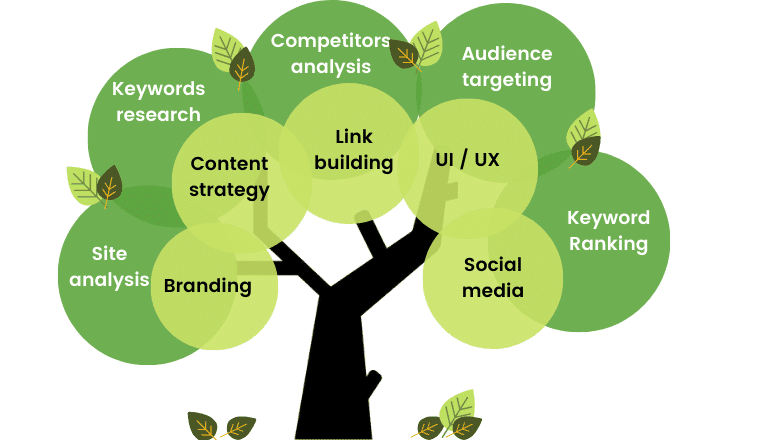Nanoelectronics: Revolutionizing the Future of Technology
Nanoelectronics has its roots in the miniaturization of electronic components, such as transistors, to increase their efficiency and speed. Traditional electronics rely on silicon-based technologies, but nanoelectronics explores alternative materials, such as carbon nanotubes, graphene, and organic semiconductors, to overcome the limitations of conventional approaches.

Nanotechnology has been making remarkable strides in various fields, and one of its most significant applications is in the realm of electronics. Nanoelectronics, a branch of nanotechnology, holds immense potential to revolutionize the future of technology. In this article, we will explore the fascinating world of nanoelectronics, its applications, and its impact on different industries.
Understanding Nanoelectronics
Nanoelectronics deals with the design, manufacturing, and application of electronic components and devices at the nanoscale level. It involves working with materials and structures that are typically on the nanometer scale, which is a billionth of a meter. At this scale, the behavior of matter and materials exhibits unique properties, enabling the creation of novel electronic devices with exceptional performance characteristics.
Nanoelectronics has its roots in the miniaturization of electronic components, such as transistors, to increase their efficiency and speed. Traditional electronics rely on silicon-based technologies, but nanoelectronics explores alternative materials, such as carbon nanotubes, graphene, and organic semiconductors, to overcome the limitations of conventional approaches.
Nanoelectronics in Integrated Circuits
Integrated circuits (ICs) form the backbone of modern electronic devices. Nanoelectronics has revolutionized ICs by enabling the fabrication of smaller and more powerful components. By utilizing nanoscale fabrication techniques, it is possible to pack a vast number of transistors and other electronic elements onto a single chip, leading to higher processing speeds, increased memory capacity, and enhanced energy efficiency.
The continued progress in nanoelectronics has enabled the development of nanoscale transistors, such as FinFETs and nanowire transistors, which offer superior performance in terms of power consumption and heat dissipation. These advancements have paved the way for the realization of advanced technologies like artificial intelligence, internet of things (IoT), and autonomous systems.
Applications of Nanoelectronics
Nanosensors and Nanodevices
Nanoelectronics has opened up exciting possibilities in the field of sensing and detection. Nanosensors, with their exceptional sensitivity and selectivity, have found applications in various sectors, including environmental monitoring, healthcare, and security. They enable precise detection of biological, chemical, and physical phenomena, leading to advancements in diagnostics, environmental protection, and threat detection.
Nanomedicine
In medicine, nanoelectronics offers revolutionary solutions for diagnostics, drug delivery, and personalized healthcare. Nanoscale devices can be used to monitor vital signs, detect diseases at an early stage, and deliver targeted therapies with high precision. They hold the potential to revolutionize healthcare by enabling minimally invasive procedures, enhancing treatment efficacy, and improving patient outcomes.
Energy Storage
The demand for efficient and sustainable energy storage solutions is on the rise. Nanoelectronics plays a crucial role in developing advanced energy storage devices, such as batteries and supercapacitors. Nanomaterials and nanoscale architectures enable higher energy densities, faster charging rates, and longer lifetimes. These advancements contribute to the widespread adoption of clean energy technologies and the transition to a greener future.
Quantum Computing
Quantum computing is poised to revolutionize information processing by leveraging the principles of quantum mechanics. Nanoelectronics is instrumental in the development of quantum computers, which rely on quantum bits or qubits for computation. Nanoscale electronic components, such as quantum dots and superconducting circuits, enable the manipulation and control of qubits, paving the way for exponentially faster and more powerful computing systems.
Flexible Electronics
Conventional electronics are rigid and bulky, but nanoelectronics offers a solution to this limitation. By utilizing flexible substrates and nanoscale materials, it becomes possible to create flexible and stretchable electronic devices. These devices can be seamlessly integrated into wearable technology, flexible displays, and conformable sensors, opening up new avenues for human-machine interfaces, personalized electronics, and smart textiles.
Challenges and Limitations
While nanoelectronics holds immense promise, it also faces several challenges and limitations. One major hurdle is the scalability of nanoscale fabrication techniques. As we venture into smaller dimensions, new manufacturing methods and precise control over material properties become essential. Additionally, the integration of nanoscale devices into existing technologies and the mitigation of reliability issues pose significant challenges that require extensive research and development efforts.
Future Prospects
The future of nanoelectronics is brimming with possibilities. Advancements in nanomaterials, nanofabrication techniques, and device architectures will continue to drive innovation and unlock new applications. We can expect further improvements in energy efficiency, computational power, and functionality across various industries. Nanoelectronics will play a pivotal role in shaping the next generation of electronic devices and transforming our world.
Nanoelectronics represents a transformative field that combines nanotechnology and electronics to create revolutionary devices and technologies. With its applications spanning across sensing, medicine, energy, computing, and flexible electronics, nanoelectronics is poised to revolutionize multiple industries. As research and development in this field progress, we can anticipate groundbreaking advancements that will reshape the way we live, work, and interact with technology.
FAQs
What is the significance of nanoelectronics?
Nanoelectronics enables the creation of smaller, faster, and more efficient electronic devices, driving innovation in various industries.
How does nanoelectronics impact healthcare?
Nanoelectronics offers advanced solutions for diagnostics, drug delivery, and personalized healthcare, leading to improved patient outcomes.
Can nanoelectronics enhance energy efficiency?
Yes, nanoelectronics plays a crucial role in developing energy storage devices with higher energy densities, faster charging rates, and longer lifetimes.
What is the role of nanoelectronics in quantum computing?
Nanoelectronics enables the development of quantum computers by providing the means to manipulate and control quantum bits or qubits.
How does nanoelectronics contribute to flexible electronics?
Nanoelectronics allows the creation of flexible and stretchable electronic devices, enabling applications in wearable technology, flexible displays, and smart textiles.
What's Your Reaction?

















